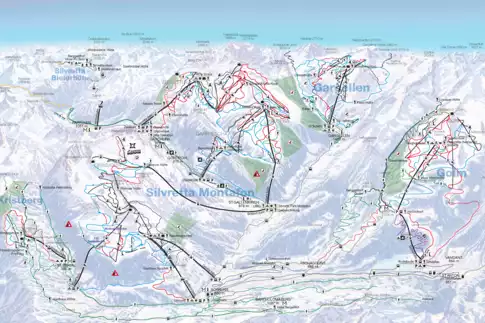Knight in shining armour
Peter Kasper and Martin Mathies have set themselves the goal of saving the Montafon Steinschaf (stone sheep). An exemplary project for authentic sustainability, which both of them are implementing with much persuasion, perseverance and commitment.
How did it happen that the original Montafon breed must be saved from extinction?
Peter Kasper: The Steinschaf (stone sheep) has evolved over centuries into the Montafon. Next to the Montafon brown cattle, it is the only native Vorarlberg animal breed. There used to be thousands of animals. As providers of wool and meat, they were kept in very simple conditions, separately from the higher-yielding goats and cows. Due to the less affectionate treatment, the Steinschaf (stone sheep) were very hardy and efficient. After the Second World War, however, beef came increasingly to the fore and mutton was relegated to the background. In particular, because the meat of the small, delicate Steinschaf (stone sheep) was just not productive enough compared to other breeds.
How did you come up with the idea to breed Montafon Steinschaf (stone sheep)?
Peter Kasper: I only used to know about the Montafon Steinschaf (stone sheep) because my father told me about it. A few years ago, I coincidentally got to know some breeders and bought three Montafon Steinschaf (stone sheep). Since then I keep it along with the other animals.
Martin Mathies: My family has always had animals around, such as hens, cows and bees. At some point I wanted to focus on one animal. It did not take long for me to then convince Peter to also give it a try with the Steinschaf (stone sheep).
How long has your initiative “Montafoner Steinschaf" been around and what has happened since everything began?
Peter Kasper: We founded the initiative in 2011. The first step was to inspire other farmers to raise Steinschaf (stone sheep). At first, we were laughed at. Many had prejudices about the animals being wild and shy. That's not true, they are very friendly with a trusting attitude. Fortunately, we were able to overcome any reservations with a little persuasion.
Martin Mathies: Since then, we have gained many new breeders - even those who had never had anything to do with livestock before. Currently, we have about 15 breeders, meaning that the number of breeders has doubled since 2011. In Vorarlberg, there are about 400 animals at the moment, of which 150 to 200 are in the Montafon. Although these numbers are already impressive, we must not let up and must continue to do all we can to preserve the breed in the Montafon. So anyone who is interested in breeding them can feel free to contact us.
Suppose that a reader would be interested in breeding them now. How would you convince him of the merits of Montafon Steinschaf (stone sheep)?
Martin Mathies: The animals are very hardy and resilient. I hardly ever had to call a veterinarian. And they are also very efficient. Hay, water, bread and sometimes a bit of bran as a reward - that is all that’s on the menu. They are simple, tame animals who quickly find a place in your heart.
One of your goals is to raise awareness among the population. Have you already noticed progress here?
Peter Kasper: Yes, definitely. Awareness and the interest of the population have become noticeably greater. Many have realised that there is something special about being able to boast of our own breed of sheep in the valley, and they actively seek us out to find out more. It makes us especially happy to see the interest of young people. For example, we regularly visit school and kindergarten classes. It is precisely there, with the next generation, that we must begin.
What else are you planning?
Peter Kasper: Currently we are working to further deepen cooperation with other breeders and also with partners such as the Montafon tourism office, Stand Montafon, and the region of Vorarlberg, who have been supporting us in the areas of marketing and finance, such as us, together with the Montafon tourism office, offering guests a guided hike to the sheep as part of BergePLUS.
Martin Mathies: We would also like to build a small show farm for old animal breeds, with a walk-in stall and a sales room. There we also want to show what rural life looked like before. But it should not under any circumstances be a stodgy museum.
You also offer products made from Steinschaf (stone sheep) for sale. How do they arrive with the people of the Montafon?
Martin Mathies: We currently have about 19 different products in the range, which we develop and sell ourselves. The range varies continuously, ranging from cushions, to shoes, bags, furs and carpets, through to meat and animal sponsorships.
Peter Kasper: The growing interest is also reflected in the willingness to wait for the products. For a carpet from sheep's wool, the buyer has to wait up to three months. Still, this does not matter for most. They know that they are investing in a sustainable product.







